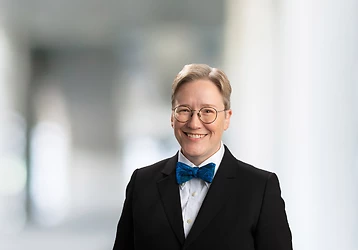Connected Cars at Risk
The FCC is Seeking to Refresh the Record with Respect to Proposals for Sharing of the Spectrum that had been set aside for Vehicle-to-Vehicle Communications - Comments are Due July 7th
Back in 1999, the FCC set aside 75 MHz of spectrum (5.85-5.925 GHz band) for Dedicated Short Range Communications (“DSRC”). The spectrum was allocated for vehicle-to-vehicle and vehicle-to-infrastructure communications, and will be used in support of autonomous vehicles and other automotive safety services. Since that time, the transportation industry has been working to develop and deploy the technology and infrastructure for these services. Cadillac will be incorporating DSRC equipment in some of its cars for the 2017 model year, and numerous states have begun to deploy DSRC infrastructure.
In 2013, the FCC tentatively concluded that the DSRC spectrum was not being used heavily, and given the increasing demand for unlicensed services, proposed that the DSRC spectrum could be shared with unlicensed devices like WiFi. The response to the FCC’s 2013 proposal has been mixed, with competing claims as to the feasibility of sharing the DSRC spectrum without causing harmful interference to DSRC services, thus potentially undercutting the life-saving potential of DSRC. The FCC recently issued a Public Notice asking interested parties to refresh the record and address specific questions with regard to potential sharing techniques. A copy of that Public Notice can be found here: https://www.fcc.gov/document/59-ghz-public-notice.
There is a consensus among all of the parties that unlicensed sharing of the band should not cause harmful interference to safety-of-life DSRC services. Despite this agreement, there are two different proposals on how that can best be accomplished. Under one approach, the current channelization plan would remain in effect, and any WiFi or other unlicensed devices would utilize a “detect-and-avoid” technique under which they would monitor the bands, and not transmit (or cease transmitting) if they detected any DSRC communications. Under the second approach, the current channelization plan would be altered, and the upper 35 MHz of the DSRC band would be dedicated to “safety-of-life” services, and unlicensed operations would not occur in that segment of the DSRC band (or possibly any shared use would be on a “detect and avoid” basis). However, with regard to the lower 40 MHz of the DSRC band, that spectrum would be shared equally between unlicensed/WiFi use and non-safety-of-life DSRC services (such as parking, tolls or entertainment), with no priority given to such DSRC services.
The Public Notice asks numerous questions about these competing proposals, including the effect re-channelization would have on the work that the automotive industry has already undertaken to develop the standards and technology for DSRC, and how re-channelization might impact the timeline for widespread deployment of DSRC. The Public Notice also seeks comment on the details for each of these competing sharing proposals, including how to distinguish safety-of-life DSRC communications. The FCC also asks whether current or future commercial mobile services (such as 5G) can supplant or supplement DSRC services, thus reducing the demand for DSRC spectrum. The Public Notice also requests that parties submit for the record any sharing studies that they have performed.
In addition, the Public Notice describes a three-phased testing program the FCC will conduct to evaluate sharing between DSRC and unlicensed devices. The FCC expects this testing to be concluded no later than January 15, 2017. The FCC is requesting that parties provide them with equipment and/or prototypes of DSRC and unlicensed devices to conduct the testing. Any such equipment should be provided to the Commission by July 30, 2016.
Any companies intending to participate in DSRC services and equipment should review the Public Notice and consider filing responsive comments as the FCC’s proposals could significantly affect DSRC services and equipment. In addition, if you have developed DSRC equipment, you should consider providing the FCC with samples for use in their testing program to ensure that whatever interference-protection standards that the FCC prescribes will adequately protect your equipment. The deadline for submitting comments will be triggered by publication of the Public Notice in the Federal Register on June 7th (with comments due 30 days after such publication (July 7th) and replies due 15 days after that). Given the relatively short deadlines, you should begin to prepare responses to the FCC’s questions as soon as possible. We would be happy to help you in preparing comments for the FCC or answering any questions you may have about the FCC proceeding or the Public Notice seeking to refresh the record in that proceeding.
Stephen Goodman
202.454.2851
goodman@butzel.com
Steven Lancellota
202.454.2836
lancellotta@butzel.com
Jennifer Dukarski
734.213.3427
dukarski@butzel.com











